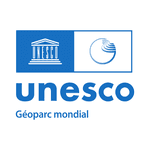Rocks of Baude
« The Petit Luberon always seduces us. You can never get too much of this diversity of spectacular and intimate landscapes imbued in history, the rich nature so rare and diverse. Cliffs, balms, peaks, forests and mixed lawns, the former presence of man, the herds on steep slopes... It is fascinating and discovering it is always with a strand of adventure. Sophie Bourlon, Research Analyst from Natura 2000 at the RNP of Luberon.
5 points of interest
 Patrimony and history
Patrimony and historyThe Taillades, a stone village
A picturesque village at the foot of the Luberon mountains, it has maintained a remarkable cultural heritage:: its church of the 18th century, the medieval Tower, the Théâtre des Carrières. In the old village, stone is used from the streets to constructions. The various dotted quarries are also the witness of a cutting stone past, hence the name of Taillades. Below, the Saint-Pierre Windmill, a former madder mill then flour mill, testifies to the industrial life of the 19th century.
 Fauna
FaunaPetit Luberon, the Mecca of biodiversity
Le Petit Luberon is part of the European Natura 2000 network like 8 other sites of the Luberon Park. Special efforts for the protection and management aimed at preserving the quality of the ecosystem and their remarkable biodiversity. A decree for the biotope protection since 1990 preserves the tranquillity of raptors by banning the practice of rock climbing and aerial sports (Ultralight aviation, paragliding, delta plane) as well as wildlife photography.
 Patrimony and history
Patrimony and historyGorges of Badarel
"Badarel" comes from the Occitan verb "badar" which means to be wide open, meaning in a broader sense crevasse, gash, hole... The Badarel falls you have just passed were developed in 1904 on city council decision to "make the passage accessible to shearers and wool cattles... ». A metal ladder, a ramp and a rope were installed and traces of iron bars show an opening with explosives.
 Flora
FloraThe Larkspur
This beautiful mountain plant is found only rarely in the southern Alps. It finds here one of the only four stations that are favourable to its development in the Luberon. Its beautiful dark blue flowers in clusters have straight spurs and do not appear until July. This plant has an impressive toxic product (delphinine) like most species belonging to the Ranunculaceae family, to which it belongs.
 Patrimony and history
Patrimony and historythe Saint Gens Chapel.
Built in the late 19th century, this single-nave building seems to have never been blessed. Abandoned in the middle of the 20th century, it was renovated into an exhibition space dedicated to the history of the stone and the quarry tools and cutters. It owes its patronage to Bornarel Gens, a saint of the Monteux region of the 12th century whose miracles would have made him a rainmaker.».
Description
With your back turned to the town hall, take the CHemin de Robion on the left and pass the cemetery.
1 - At the next intersection, continue straight on the road. Pass the Saint-Gens chapel, then 400m further, turn right on the Chemin de Boulon. Turn left on the edge of the woods. When reaching the big clearing of Boulon, go up the paved road for 200m and turn right.
2 – At the pole'Boulon', go down the gravel path and at the mouth of the field and the source of Boulon, turn left and, 50m higher, climb to the right on the path (steep at the beginning). Stay on the right until you reach the foot of the cliffs. Weave through the large balms while enjoying passages of cliff ledges. After the circus of Boulon, pass below the large face of the rocks of Baude. Cross the rock shelter and climb to the breach of Castellas avoiding the steps that descend towards the foot of the massif (the marking is tricky). Cross the breach and switch to the gorges of Badarel. Careful, the trail is quite steep and stony.
3 - At the bottom of the ravine (pole:'The Castellas'), turn right and start the descent of the gorges of Badarel. Caution, it is narrow, steep, rocky and it includes a short passage with a ladder. Continue through the bottom of the valley and reach a track. Head across, then at the first houses, cross a barrier and continue until the Chemin de Robion.
4 - Turn left to return to the starting point.
- Departure : Town Hall Square, Les Taillades
- Arrival : Town Hall Square, Les Taillades
- Towns crossed : Taillades and Robion
Forecast
Altimetric profile
Recommandations
Careful! Even though the ride is classified as average thanks to its short distance, some of its passages are difficult. Vigilance on the ledges of the circus of Boulon and extreme caution in the gorges of Badarel; very rocky gravel ledge on the right-of-way of the trail, passage with a ladder. Caution with your ankles and some of the gravel descents.
Information desks
Luberon UNESCO Global Geopark
60, place Jean Jaurès, 84400 Apt
House of the Luberon Regional Nature Park
60, place Jean Jaurès, 84400 Apt
In the heart the old town centre of Apt, the House of the Luberon Regional Nature Park welcomes you in a town house of the 18th century. The permanent exhibition of the geology museum has a rich collection of fossils evidencing the geological history of the Luberon.
On sale at the shop: books, maps, guidebooks, games, posters...
Open Monday to Friday from 8:30 am to 12:00 pm and from 1:30 pm to 6 pm (and on Saturday, depending on the program). Free admission.
OTI Luberon Coeur de Provence
Place François Tourel, 84300 Cavaillon
Access and parking
At 5km east of Cavaillon, through the D143.
Parking :
More information
Source

Report a problem or an error
If you have found an error on this page or if you have noticed any problems during your hike, please report them to us here:



